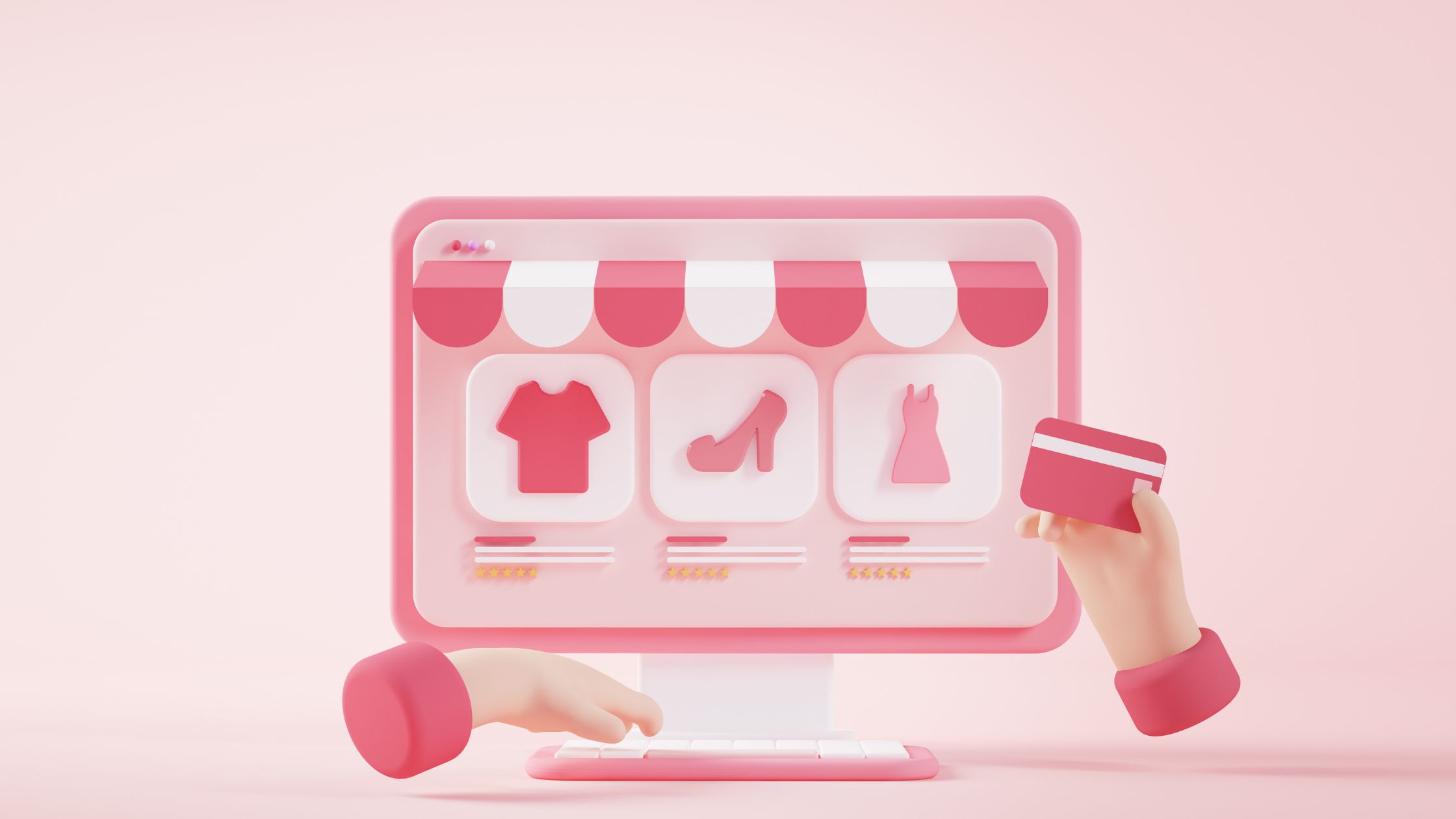
The Ultimate Guide to Direct-to-Consumer (DTC) Marketing
As more consumers spend longer online, interacting with brands via social media, the rise in direct-to-consumer marketing isn’t a huge surprise. Modern consumers are tech-savvy, deal-hunting and spend lots of time online- all great reasons for brands to use DTC as their primary channel for marketing and distribution.
So, what is DTC exactly? How does it work, and what are the benefits? We explore these and more in our ultimate guide to DTC marketing.
What is DTC marketing?
Direct-to-consumer marketing is when brands sell directly to their consumers, skipping the more traditional sales channels like shops. Traditionally, brands would use third-party retailers or their shops to sell products and services to consumers. Still, with the surge in online shopping, it makes sense that more brands are moving to reflect consumer behaviour. By cutting out the middleman, brands can target their marketing efforts directly to consumers and sell directly to them.
What are the benefits of DTC marketing
With more brands adopting this more direct approach, let’s look at the benefits of the DTC marketing strategy.

It gives brands greater control
Using DTC gives brands more control over their consumer relationships, allowing them more control over the customer journey, including delivery, branding, marketing, and customer service. Unlike the more traditional B2C marketing approach that also markets to consumers but relies on either a physical store or a third-party retailer like Amazon to help increase sales, DTC cuts out the need for intermediaries.
A brand using DTC can have complete autonomy over its customer journeys which, in turn, helps them better understand its audiences.
It helps them better understand the customer
Being able to converse and engage with their customers directly, brands can learn more about their audiences, their age demographic, where they spend time online, and how they respond. This means brands can tailor and refine their messaging and the time of day they share content with consumers based on when their audience is most responsive online.
Understanding who they’re speaking to and where is a valuable feature for brands. They can continue refining products and responding to real-time feedback, helping build trust with loyal customers.

Delivers a faster time-to-market
When a brand only needs to consult its marketing team before launching a new campaign or product, it saves valuable time and means it can get to market quickly. Brands with internal stakeholders or third-party investors who have the last say ultimately hold things up before launching a new product.
A DTC brand cuts out the middleman, allowing them to experiment with their campaigns according to how their consumers typically engage with their brand online.
Delivers better margins
DTC brands pocket all their margins as they don’t need to pay third-party retailers or other vendors, which means they steal all the profit and can reinvest money into their marketing efforts more quickly.
Knowing your DTC business metrics is key

Before launching a direct-to-consumer marketing strategy, getting to know the specific metrics to use is critical to the overall success of your campaign. Unlike other marketing campaigns that use business metrics like ROI (return on investment) and CTR (click-through-rate), a DTC business will use different terms;
- Customer LTV (Lifetime Value) – This is a predicted metric looking at the total revenue that a customer might generate over the lifetime of their interaction with a brand.
- Conversion rate – This is the number of visits or sessions that have resulted in a sale or conversion
- Average Order Value (AOV) – This is the number of orders for each customer as well as the average amount for each order submitted
- Churn Rate – A churn rate calculates the number of customers who leave a brand entirely over a certain amount of time.
- Customer Acquisition Cost (CAC) – This is how much marketing investment is needed to gain a customer through a marketing channel like Google Ads, sponsored Instagram posts or Display ads
- Monthly Recurring Revenue (MRR) – this measures the total amount of predicted revenue coming in each month
- Product margin – This is the cost of goods/ a product sold vided by the gross sale price
- Net Promoter Score (NPS) – This is the customer satisfaction, and loyalty measure brands use globally
- Net revenue retention is the revenue left over after all credits, discounts and allowances have been applied.
What are the best practices for DTC marketers?
Brands considering adopting the DTC approach or wanting to try it will rely heavily on their marketing efforts, so some of the best things to try include;
Build a brand identity
The tricky thing with DTC brands is they can’t rely on audiences simply knowing about them or what they stand for because they’ve likely never come across them before. This means building a strong brand identity and staying consistent across all channels they use will be necessary. Brands that use DTC as their only marketing strategy will need to ensure customers associate their brand with something positive (think being eco-friendly or offering a unique service).
Collect and analyze marketing data
To start understanding their audiences and their preferences, collecting data is an integral part of a DTC brand strategy. With the need to build close relationships quickly with their target audiences, accurate and targeted information is essential for DTC brands to start learning and adjusting their approach accordingly. Tracking, collecting and analyzing data becomes integral to the overall marketing approach and helps build those strong customer relationships.
The only drawback of using online tracking is the issue with cookies expiring, so brands need to act quickly and start processing and learning from their data quicker than brands with other sales channels.
Use social media for more than just advertising
Social media channels are also a great way to market your brand, and paid advertising has great ROI for DTC brands. Still, there are also great opportunities to create a brand persona in organic posts that consumers will start to become familiar with. Build that close relationship with consumers through interacting and posting without needing to ‘sell’ and create a strong brand presence across social channels for consumers to engage. Using social media also gives DTC a real-time customer service tool, with customers often using the comment section on social posts to provide their experience or feedback on a brand.
When you think of a DTC brand, you typically think of influencer marketing. Influencer marketing has become almost synonymous with DTC marketing as brands use the leverage of thousands or sometimes millions of followers on platforms like Instagram and TikTok. Using influential figures to market your product to a broad and already trusting audience is a great way to strengthen your brand awareness.
Personalise the shopper’s experience

With a digital-first focus, DTC brands need to personalize the consumer’s experience, as a customized message will help them stand out. Curating a product or news to meet customers’ needs is a great way to ensure your product and brand stand out from the noisy online crowd.
This also falls back on getting the data right, as accurate data will help build audience segments and understand behaviours. Having accurate data and being able to analyze it will help create a more personal experience for everyone engaging with your brand.
Combine your other marketing channels
Make sure you’re merging more marketing channels, investing in email campaigns and supporting DTC with other marketing efforts to maximize your opportunities. For brands who have solely launched online, try an offline approach like a pop-up store or an immersive experience that helps bring your brand physically to your customers.
Examples of successful direct-to-consumer marketing
Hundreds of DTC brands have emerged over the last couple of years, with the pandemic forcing more brands to get creative and keep costs low when lockdowns and shipping restrictions were in place. This meant a surge of DTC brands coming onto the market. Brands like;
Beauty Pie- Buyers club cosmetics company is a skincare and beauty brand exclusively DTC. They have an online website offering considerable discounts to paying members and have built a trusted brand through customer reviews and social media posts alone. Beauty Pie has created a solid and reputable name within a notoriously tricky industry where customer reviews mean everything. They’ve used Instagram, influencer marketing and target marketing to create an online presence that rivals beauty giants Mac and L’Oreal.
Shein- Fast-fashion giant Shein has been one of our biggest DTC success stories, launching a business solely online and drawing in millions of shoppers worldwide. Although their critics have had a lot to say about the cheap material and fast-fashion movement being detrimental to the environment and labour involved, they continue to grow. In 2021, the brand launched an app that saw them overtake Amazon in the US app store charts, and their app was the second most downloaded for the year.

What DTC trends should marketers know in 2022?
- Chatbot technology could handle heavy inboxes – One of the features of DTC brands is their proximity to their consumers, which often means having to respond and reply to lots of messages across social platforms, emails and onsite. Instead of spending lots of money hiring teams of people to answer these queries, clever chatbot technology looks set to help DTC brands manage their groaning inboxes and offer responses to help customers with their questions.
- Self-care is a major opportunity– with audiences being much more in-tune with how they feel and taking time out to invest in their mental health and wellbeing through self-care practises, brands in this space should be looking to maximize this as an ongoing trend.
- Sustainability and authenticity aren’t just buzzwords – a better-informed audience looks for green credentials in the brands they interact with. And purchase from those brands that can showcase their sustainable business and share their eco-credentials will be more popular than those in the same space. With marketing regulations cracking down on brands that ‘green wash’ or make claims about their sustainability, the opportunity to be authentic and more eco-conscious is more important than ever.
- Micro-influencers are a budget -friendly way to boost engagement- Don’t have big budgets to hire influencers with hundreds of thousands of followers? Don’t worry- micro-influencers of a few thousand still have the potential to reach previously untapped audiences at much smaller budgets. Try working with micro-influencers that reflect your brand ethos so you’re engaging with audiences who are already like-minded.
Is DTC a passing rave or is it here to stay?

So, is this emerging trend of snazzy new brands launching with little budgets here to stay? According to data from eMarketer, global e-commerce sales grew YoY by 34% and are set to rise, which would strongly suggest DTC is here to stay.
With lower costs for marketing and launch coupled with a more personalized brand experience, it’s no surprise DTC is set to grow. If brands are considering a DTC approach, they need to be aware of a few things that will help consumers discover their brand and have a positive experience when interacting with them online. Chatbots responding to messages and comments will keep consumers feeling heard, appreciated, and accessible. With over 2.2 million people worldwide using screen readers to access content online, brands that use a DTC approach need to make their content accessible to everyone. That means alt text for images and using descriptions in the caption section to help screen readers accurately share and describe the post.
The success of Shein’s mobile app in 2021 indicates how much success an app can bring a DTC with a considerable following. Shein’s app lets their customers interact, play games and buy clothes. DTC brands should consider an app in their 2023 marketing plans to help retain existing consumers and attract new ones.
As with any marketing campaign, savvy brands don’t rely on just one or two marketing channels but are more willing to experiment with reaping the rewards! Using a solid mix of a high-performing website with SEO, social channels that engage and interact with organic posts and paid media using digital channels will have a better turnout.
DTC certainly isn’t going anywhere as more people than ever shop, work and play online. It’s also evolving as a marketing approach and should be adapted accordingly.




